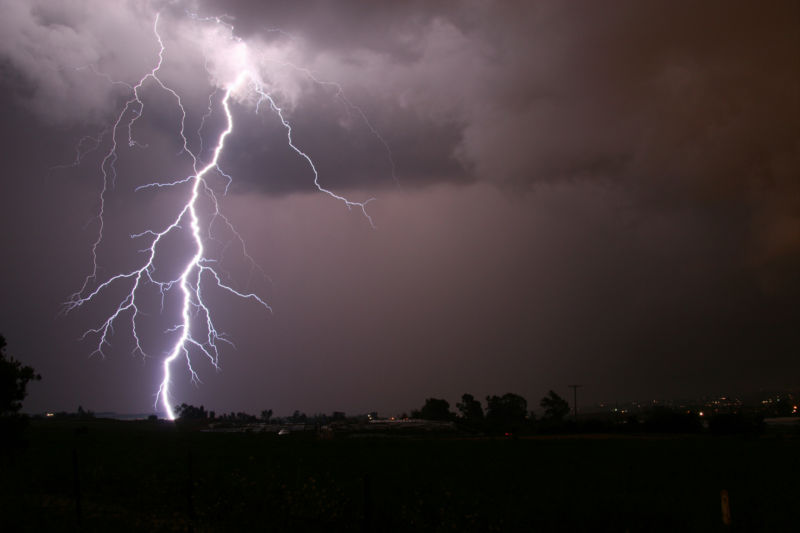Lightning strikes leave behind a radioactive cloud
Ars Technica 2017-11-25

Enlarge / Don't mind us, just performing some alchemy here. (credit: NOAA)
Thunderstorms have a lot of overt indications of power, from the thunder and lightning to torrential rains and hail. But the full extent of their power wasn't obvious until recent years, when we discovered they generate antimatter. Now, researchers in Japan have looked at this phenomenon more closely and determined that a lightning bolt generates a zone that contains unstable isotopes of oxygen and nitrogen, leading to series of radioactive decays over the next minute.
Transformative
All of these phenomena are powered by the fact that the electric fields within thunderstorms are able to accelerate electrons to extremely high energies. Whenever these electrons move along a curved path, they emit radiation that's proportional to their energy. As a result, a storm can be associated with bursts of gamma rays, extremely high-energy photons.
Gamma rays rays are primarily noted for their interaction with the electrons of any atoms they run into—it's why they're lumped in the category of ionizing radiation. But they can also interact with the nucleus of the atom. With sufficient energy, they can kick out a neutron from some atoms, transforming them into a different isotope. Some of the atoms this occurs with include the most abundant elements in our atmosphere, like nitrogen and oxygen. And, in fact, elevated neutron detections had been associated with thunderstorms in the past.